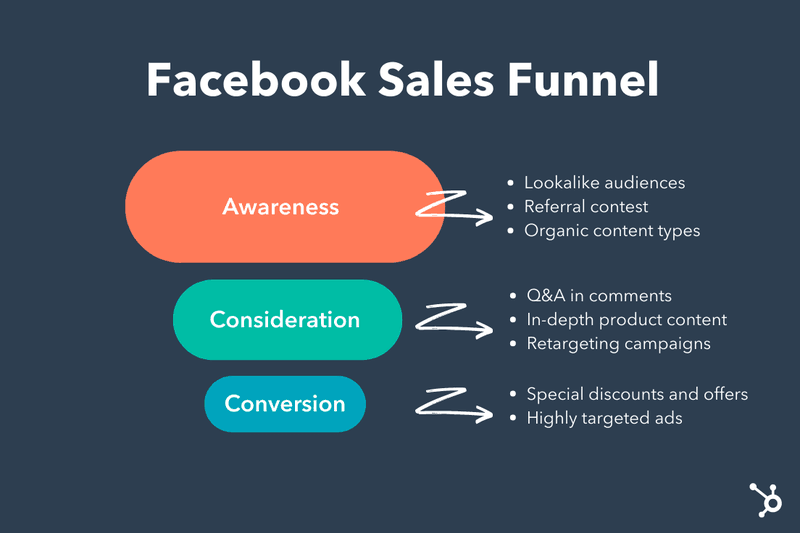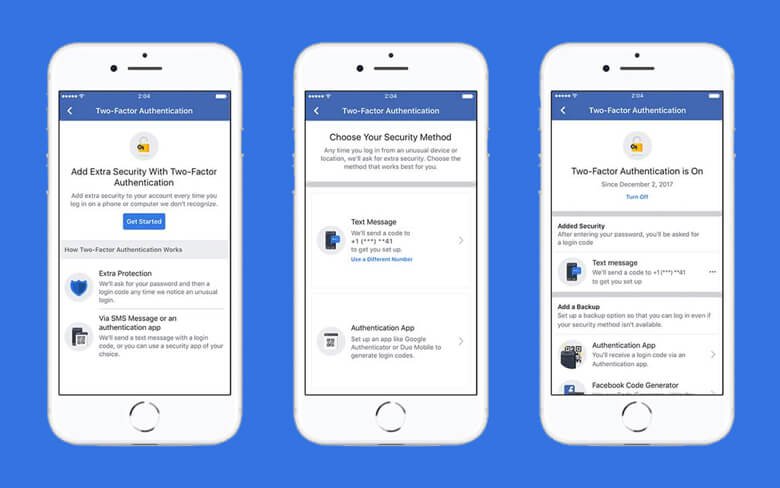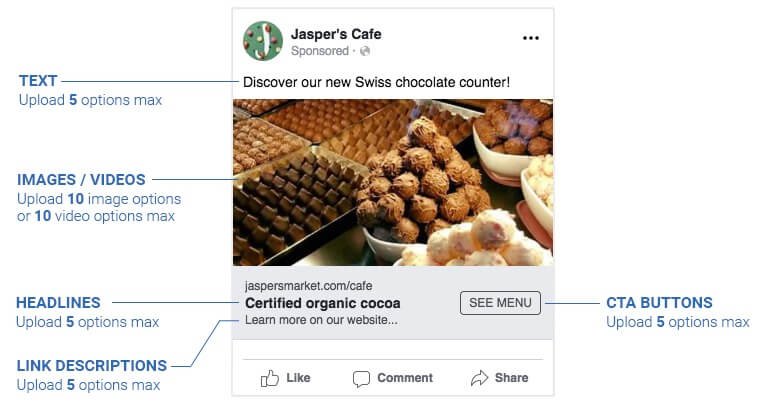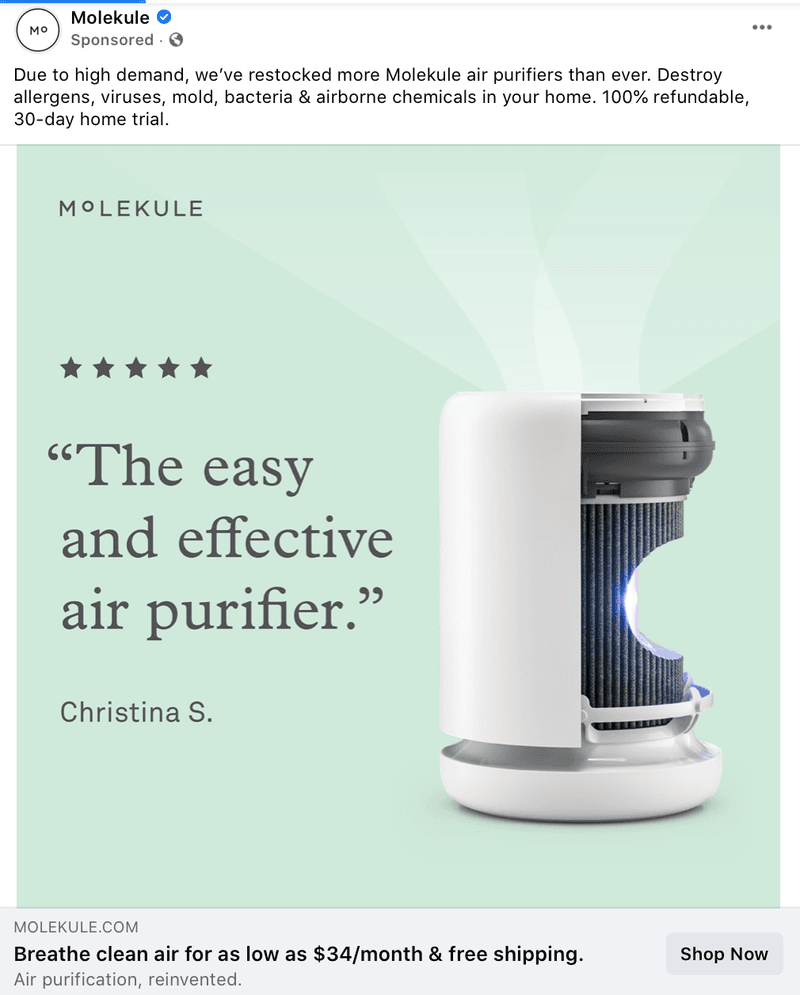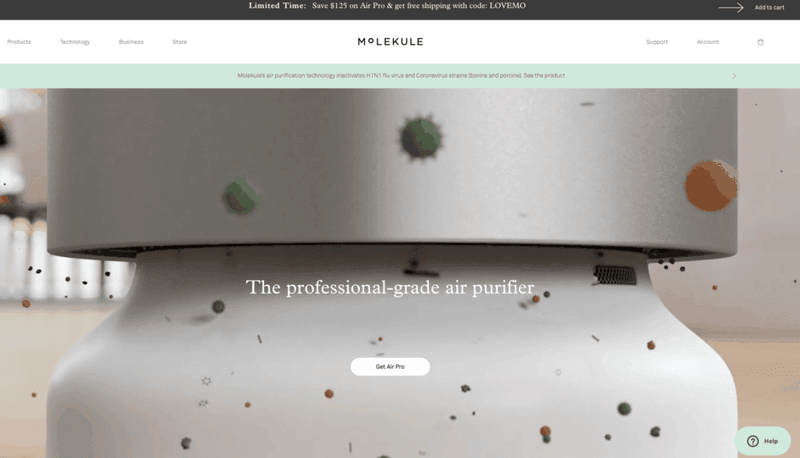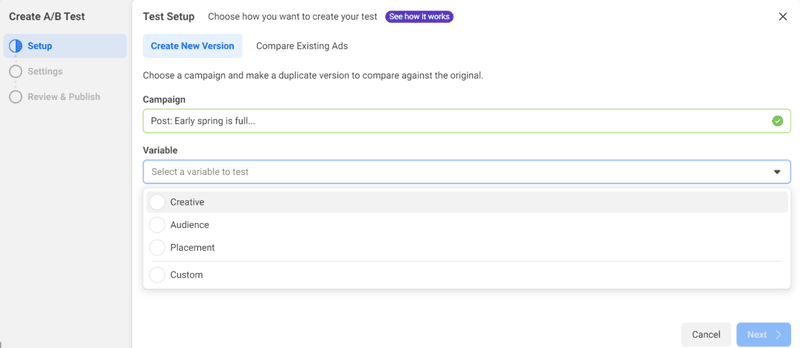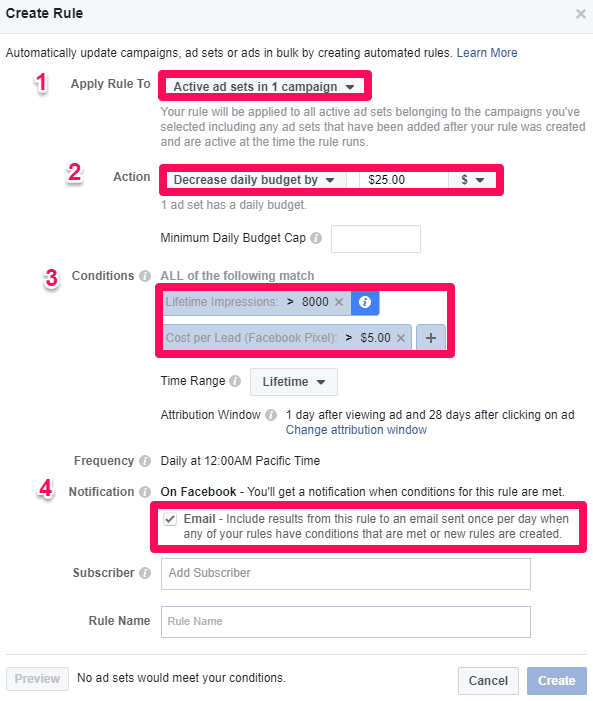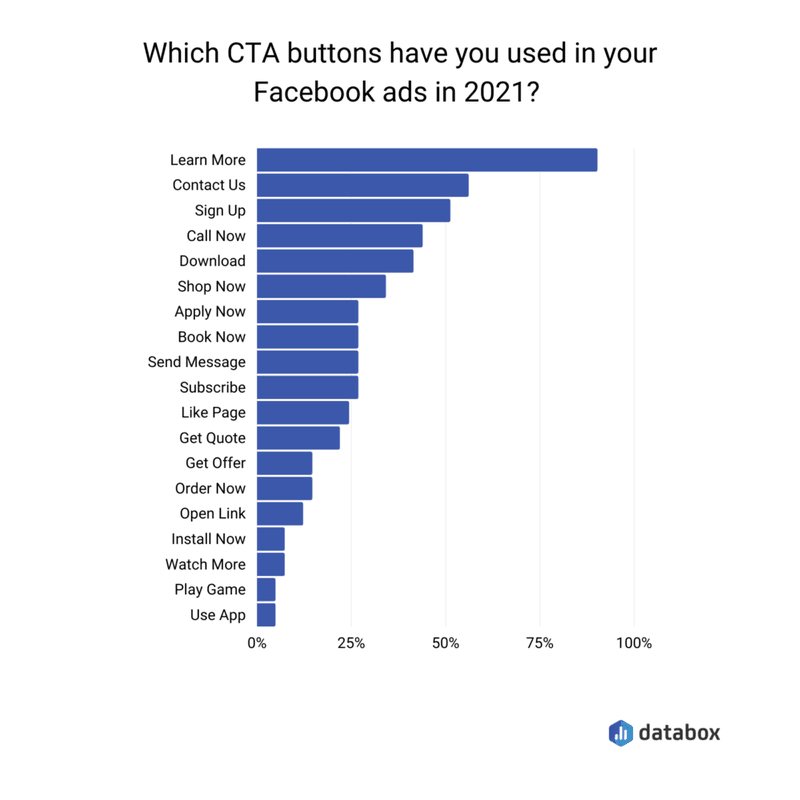24 Expert Tips to Optimize Facebook Ads For the Highest ROI [2026]
Discover expert tips to maximize your Facebook ad performance and achieve the highest return on investment.
Published November 5, 2024
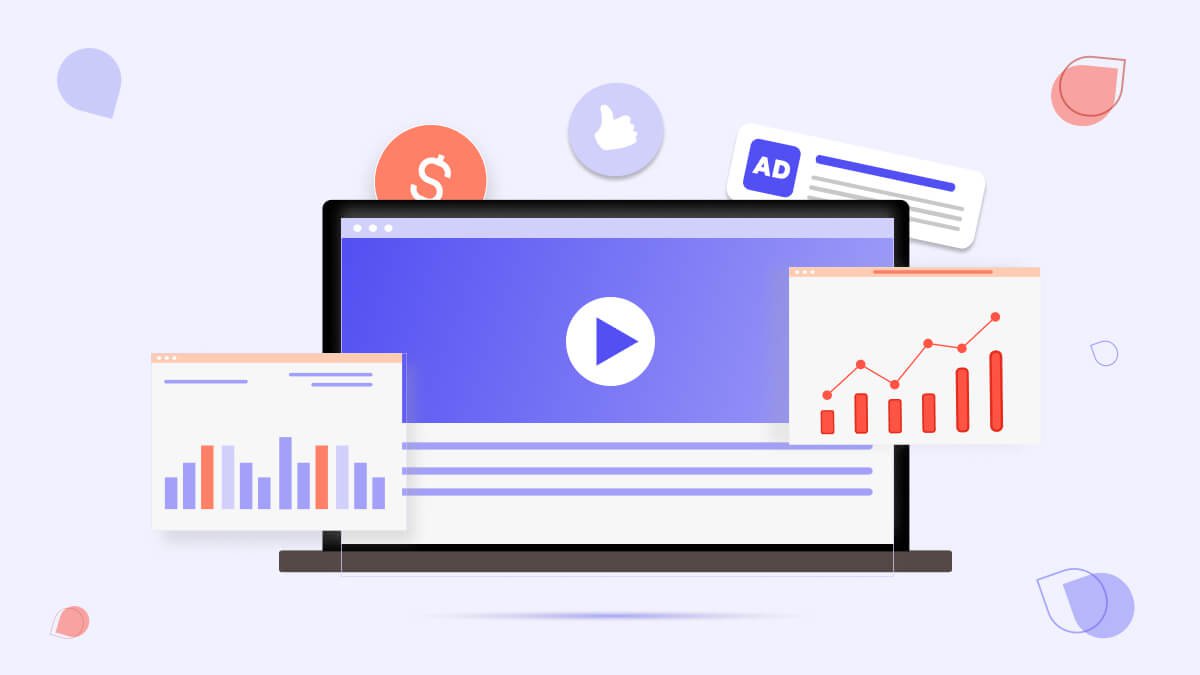
With all the privacy and algorithm changes, Facebook ads are still one of the most effective channels to reach potential high-value customers and drive sales for your business. Facebook is one of the largest platforms—with over 2.98 billion active users and thousands of brands running ads on it.
However, running a successful ad campaign on Facebook takes more than just creating an ad and hitting the "promote" button.
To truly maximize your ROI, it's important to understand how to optimize each ad campaign.
In this helpful post, we've compiled 24 expert tips from experts that work with 8-figure brands, to help you optimize your ads and hit your business goals. Struggling to see the type of ROI you're looking for? Not sure your Facebook ads agency or eCommerce Facebook agency is cutting it?
Try these tips from the experts.
Why your Facebook Ads aren't working
There are several reasons why your Facebook ads may not be working. One common issue is poor targeting, if your ads are not reaching the right audience, they will not be effective. Therefore, it is crucial to target your ads to the correct demographics, interests, and behaviors.
Another common issue is low ad relevance. Testing and experimenting with different elements and strategies can help you to identify the cause of underperforming ads and make the necessary changes, that will help achieve your ultimate goal.
How to optimize your Facebook Ads
Want to show your ads to people who will actually buy? You need to optimize them. Here are all the best ways to do that.
1. Get your advertising account in tip-top shape
First, let's make sure that you have healthy and active advertising accounts before you get started with any ads.
To get your Facebook advertising account in tip-top shape, take these actions in the following order:
- Verify your business
- Create a detailed business account
- Set up a Facebook pixel
- Install conversion tracking
- Structure your ad account properly
- Create custom audiences, use the Facebook Ad Library, and test and optimize your campaigns.
These steps will help you to track and measure the success of your ad campaigns, target your ads more effectively, and gather ideas for the future. Here is an excellent step-by-step guide from Madgicx on how to set up your account.
2. Install the Meta Pixel
The Meta Pixel, also known informally as the Facebook retargeting pixel, is a snippet of code you insert into the back end of your website.
The Meta Pixel can track and boost ROI for businesses on the platform. Use it to:
- Build custom audiences
- Build lookalike audiences
- Track and improve conversion rate
- Create remarketing campaigns
Essentially, the tracking pixel allows businesses to track website visitors and gather data on their behavior (including each conversion event), which can be used to create more targeted and effective ads.
3. Install Google Tag Manager
You can use Google's Tag Manager (GTM) to track user behavior on your website and use that data to optimize your Facebook advertising campaigns.
Using a combination of both the Facebook Pixel and the Google Tag Manager can help with:
- Tracking conversions
- Retargeting
- Optimizing ad delivery
- Event tracking
- Optimizing your ad spend
Overall, Google Tag Manager can be a powerful tool for improving your Facebook advertising campaigns by giving you more data to work with and making it easier to add the Facebook Pixel to your website.
Pro tip: combine the data you collect from Google Analytics and Google Tag Manager to create more effective and targeted Facebook advertising campaigns, which can help to increase your return on investment.
4. Consolidate your conversions
Another great tip is tracking and measuring the performance of your ads in a way that allows you to see the full picture of how your campaigns are performing.
There are a few key steps you can take to consolidate your Facebook Ads conversions:
- Set up conversion tracking
- Create custom conversions
- Utilize Facebook's conversions API
- Use Lookalike Audiences
- Consolidate your conversion data
- Optimize your campaigns based on your data
Consolidating your Facebook Ads conversions requires a bit of setup, but it can provide you with invaluable insights into how your campaigns are performing and help you make more effective decisions for your business.
5. Choose the right bidding strategy
Choosing the right bidding strategy for your Facebook ads means selecting the option that best aligns with your advertising goals and allows you to effectively allocate your ad spend.
There are several different bid strategies and bidding methods available, including:
- Cost-per-click (CPC) bidding
- Cost per impression (CPM) bidding
- Cost per action (CPA) bidding
- Lifetime budget
- Daily budget
Before selecting bid strategies, it's important to consider your advertising goals, target audience, and budget, as well as the performance of your ads to date.
6. Define your objective
When you create a Facebook ad campaign, one of the first steps to do is to define the campaign's objective. The objective of your campaign determines the type of ad and targeting options that will be available to you, as well as how Facebook will optimize your ad delivery.
These are some of the top points to consider when defining your campaign objective:
- Brand awareness
- Traffic
- Engagement
- App installs
- Video Views
- Lead generations
- Messages
- Conversions
- Store visits
Having a well-defined campaign objective allows you to create more effective and efficient Facebook ad campaigns that will help you achieve your specific goals and targets.
7. Expand your interests
Don’t just upload your email list and hope for a miracle. To improve your targeting you need to expand the interests of your audience. There are a ton of different interests you could try including:
- Magazines they may read (including trade publications)
- Favorite personalities or influencers they follow
- Professional tools or equipment they may use
- TV shows they might watch
- Podcasts they might listen to
- Favorite brands
- Job positions
- Hobbies
Also, think about the websites that your ideal target audience might be visiting and the competitors they may be into. Here’s a great video that breaks it down.
8. Target competitors’ audiences
Targeting your competitors' target audience is a way to reach people who are already interested in similar products or services.
Keep in mind that while targeting your competitors' audience can be an effective way to reach new ideal customers, you should also focus on building your own audience and promoting your own unique value proposition.
Also, keep it positive. Facebook's advertising policies forbid discriminatory practices or targeting ads toward users or companies with negative intent.
9. Use automation
Let automation do all the heavy lifting! Set up a system that can automatically adjust your ad spend and targeting based on your campaign performance.
This can help you maximize your return on investment and achieve your advertising goals more efficiently. Here are a few strategies you can use to automate your ads:
- Automated rules
- Bid strategies
- Custom audiences
- A/B testing
- Scripts
- Automated performance optimization tools
Facebook automated rules can help you scale your campaigns more efficiently and effectively, by using machine learning algorithms to adjust your ad spend and targeting based on the performance of your campaigns, rather than manual optimization.
10. Target users at every stage of the funnel
You cannot use the same approach for all your users. You have to create specific ads that target users at different stages of the customer journey, from initial awareness to post-purchase retention. A full-funnel strategy typically includes three main stages:
#1 Top of the funnel
The top of the conversion funnel is the initial stage of the customer journey, where users are just becoming aware of a problem or need. At this stage, your ads should focus on building brand awareness and driving website traffic.
You can use targeting options like interest targeting, lookalike audiences, and engagement targeting to reach users who are in the awareness stage.
#2 Middle of the funnel
The middle of the sales funnel is the stage where users are considering their options and gathering information. At this stage, your ads should focus on driving conversions by providing more detailed information about your products or services.
You can use targeting options like custom audiences, lead generation forms, or even video views to reach users who are in the consideration stage.
#3 Bottom of the funnel
The bottom of the marketing funnel is the stage where users are ready to make a purchase. At this stage, your ads should focus on promoting specific products or services and encouraging users to take a conversion action.
You can use targeting options like conversion tracking, retargeting, and catalog sales to reach users who are in the decision stage.
By using different types of ads and targeting options at each stage of the customer journey, you can create a more effective and efficient full-funnel strategy that targets users at the right time with the right message.
11. Abide by Meta’s advertising policies
Before you even think about running ads on Facebook, make sure that you fully understand all of the platform's policies - the last thing you want to do is violate these and get your account disabled!
These are the following principles that all advertisements need to adhere to:
- Protecting people from unsafe and discriminatory practices
- Protecting people from fraud or scams
- Promoting positive user experiences
- Promoting transparency
Facebook automates this review process but also relies on manual reviews and the enforcing of restrictions. Before your ads get flagged, do an internal review of each ad to ensure that it stays within the platform’s guidelines. Read Facebook's full community standards here.
12. Secure your account (2-factor authentication)
Facebook restricts what you can do on the platform based on the level of your account security. So you need to ensure that your Facebook business account is secure and cannot easily be hacked into.
In order to avoid any restrictions on your account, make sure that you enable two-factor authentication for added account security. Learn how to turn on two-factor authentication over here.
13. Expanding lookalike models
Lookalike models are a powerful tool that allows you to reach new people who are likely to be interested in your business because they're similar to your current customers. There are two main ways to expand your lookalike models and reach more people:
- Increase the size of your seed audience (upload a bigger audience)
- Use different types of seed audiences (customers, website visitors, engagement metrics, app activity)
By expanding your lookalike model, you can reach more potential customers and improve the performance of your ads.
14. Test broad targeting
Broad targeting refers to using a wide range of targeting options, such as demographic information, interests, behaviors, and more, to reach a large, diverse target audience.
Look at different things like:
- Demographics
- Interests
- Behaviors
- Placements
- Ad formats
When you’re testing this out, it's important to remember that not all targeting options are suitable for your specific business.
It's also important to be aware that targeting options can have a cumulative effect, so when you test different combinations, it can be more useful than just testing each one individually.
Keep track of your results, you'll be able to find the best targeting options for your business by analyzing the data that comes out of your tests.
15. Optimize your copy and images
Make sure your ad copy and creatives are compelling and use an array of creative assets that will reach a broader audience, hold the attention of your existing audience better, and then enhance your sales funnel.
So make sure that your copy and images are relevant to your target audience and that your ad copy is clear and easy to read. And that comes with experience with your specific audience and niche. This is where an experienced Facebook Ads expert can help.
16. Make use of Facebook's dynamic features
Facebook continues to add more and more dynamic features to help your ads come alive. And you need to take advantage of all the features that are given to you, as soon as they are rolled out because the platform prioritizes these new features. Here are a few examples of the latest settings you should use:
17. Update your landing page
Once someone has clicked on your incredibly well-designed ad, they will go to your landing page. Make sure they land on a hot page that both reflects who you are as a business and makes them take your desired action.
Here are some top tips for good landing pages:
- Call-to-action
- Test different variations
- Make it mobile-friendly
- Make it fast
- Include customer reviews and testimonials as social proof
- Make sure it's consistent with your ad
Here’s an example of an ad from Molekule:
And here’s their landing page. Notice how the color scheme and the wording match. Both talk about a specific advantage of the product and use the words “air purifier”.
18. Run A/B Tests
Like with any marketing channel, the first few weeks/months is a learning phase where you learn what works for your business/audience. A/B testing can (and should) be used to test different elements of your ad such as ad copy, images, targeting options, placement, and more.
When you run an A/B test, you should make sure that you are only changing one variable at a time, to ensure that you are able to determine which specific element is having the biggest impact on your campaign's performance.
Also, you should let the test run for a sufficient amount of time, this way you'll be able to gather enough data to make an informed decision.
A/B testing can be a powerful tool for improving the performance of your ads and driving better results. By testing different variations of your ads, you can find out what works best for your target audience, improve your ROI, and get the lowest cost per click possible.
19. Try out the Fast Takeoff Method
What everyone will tell you is to use gradual scaling, testing, and optimization to find what works best. But sometimes you don’t have enough data to really optimize your campaign and that’s when you should use the Fast Takeoff Method.
It involves spending more on your daily budget than you expect, right in the beginning, to give yourself a boost of data and be able to optimize your campaigns much quicker.
It's important to keep in mind that it's not just about scaling your campaign budget, but also scaling targeting and optimization, always being vigilant about performance and adaptability.
20. Put your ads on a time schedule
Putting your Facebook ads on a schedule is a great way to ensure that your ads are only shown at the most effective times, which can help you maximize your ROI.
Here are a few steps you can take to put your Facebook ads on a schedule:
- Go to Facebook Ads Manager: Log in and go to the Ads Manager or Power Editor.
- Select the ad set: Click on the ad set that you want to schedule, this will take you to the ad set's settings.
- Navigate to the schedule section: Look for the "schedule" section, and click on the "Edit" button.
- Choose the start and end date: Set the start and end date for your ad set. You can choose the specific date and time you want the ad set to start and stop running.
- Choose the days and hours: Choose the days of the week and hours of the day that you want your ad set to run. For example, you can choose to run your ad set only on weekdays during business hours.
21. Add new creatives to reduce ad fatigue
When people see the same ad over and over again, they tend to get bored. To keep your product and brand fresh for your audience, ensure that you have different kinds of creatives. This will help your audience see a greater variety of your ads, improve engagement, and move them along the customer journey.
» Need some inspiration? Check out these 250 top eCommerce ad creatives.
22. Set up auto-optimization rules
Auto-optimization rules can do all the heavy lifting and can save lots of time for you in the long run. These are automatic rules that adjust the delivery of your ads based on their performance. These rules make it easier to manage your ad campaign.
Examples of auto-optimization rules include:
- Automatically turning off your ad when your CPC is too high
- Adjusting your budget based on the performance in real-time
- Increasing your budget when your impressions hit a certain threshold
Just remember, auto-optimization rules don't replace the need for monitoring ad performance and making adjustments manually, but rather they could act as a helpful aid to improve efficiency. So it’s still important to keep an eye on the performance of your ad and make changes as needed to achieve your optimization objective.
23. Add a CTA button to increase conversions
Adding a call-to-action button to your Facebook ads is important because it helps to increase conversions by guiding users to take a specific action, such as making a purchase, signing up for a newsletter, or visiting a website.
By including a CTA button, you make it clear to the user what you want them to do next and help create a sense of urgency. This can help to increase the chances of them taking the desired action.
Not sure which text to use? Here are the most popular CTA buttons from 2021.
24. Use video content
Using video in your ad campaigns can be an effective way to grab attention, build brand awareness, and drive conversions. Here are the top reasons to use video:
- High engagement rates: Videos are more engaging than other types of Facebook content, and are more likely to be shared and commented on. People are more likely to watch a video than read text-based content.
- Increased brand awareness: Video ads can help to increase brand awareness by reaching a larger audience and creating a more memorable experience for the viewer.
- Increased conversions: Video ads can help to increase click-through rates and conversions by providing more information about your product or service in a way that is more engaging and easy to understand.
Different types of videos you should test:
- Videos showing your customers using the product
- Customer reviews & user-generated content
- Influencer videos
Unlock the power of Facebook Ads
Facebook advertising can be a powerful tool for businesses to reach potential high-value customers and drive sales. By following the expert tips outlined in this post, businesses can learn how to optimize their Facebook ads campaigns to truly maximize their ROI.
From targeting the right audience, choosing the right ad format, testing different strategies, reporting and more, these tips can help businesses to create effective and high-performing ad campaigns that drive results.
Need help optimizing your Facebook Ads? Come find the perfect Facebook marketer for your project on Mayple. We have a community of 600+ vetted experts. Tell us a bit about your business and we will match you with an expert that has proven experience in your niche and a successful track record running Facebook Ads. Get started here.
FAQs
How does Facebook ad optimization work?
Facebook ad optimization is the process of adjusting and fine-tuning various elements of a Facebook ad campaign in order to improve its performance and increase its ROI.
How do I optimize my Facebook ads in 2022 / 2023?
Optimizing your Facebook ads for 2022 will require staying up to date on the latest best practices, trends, and changes in the platform. Here are a few tips to help you optimize your Facebook ads:
- Utilize Audience Insights
- Leverage retargeting
- Use A/B testing
What are the 3 types of optimization goals on Facebook?
Three common optimization goals include:
- Traffic: This goal is designed to drive more clicks to a website or app. It can be used to increase brand awareness, generate leads, or drive sales.
- Engagement: This goal is designed to increase engagement with a Facebook post, such as likes, comments, and shares. It can be used to build a community around a brand or to increase the reach of a post.
- Conversion: This goal is designed to drive conversions, such as purchases or sign-ups, on a website or app. It can be used to increase revenue or acquire new customers.
What are 5 ways to optimize a Facebook page?
- Utilize Facebook Insights: Facebook Insights is a built-in analytics tool that allows you to track key metrics such as page views, engagement, and audience demographics. This data can be used to identify patterns and make informed decisions about how to optimize your page.
- Create compelling content: The key to a successful Facebook page is providing valuable, relevant, and engaging content for your audience. This can include text posts, images, videos, infographics, and live videos.
- Use visuals to grab attention: Facebook is a visual platform, so using high-quality images and videos can help grab attention and increase engagement.
- Use calls to action: Encourage your audience to take action by including calls to action (CTAs) in your posts. This can include links to your website, sign-up forms, or other promotional materials.
- Engage with your audience: Respond to comments, messages and reviews on your page in timely manner. This can help to build a sense of community around your brand and increase engagement.
Is there still a 20% text rule on Facebook ads?
Facebook no longer enforces a strict 20% text rule on ad images. Instead they use a grid tool that allows you to check if an ad image has too much text and if it would be disapproved according to their guidelines.
How many conversions does Facebook need to optimize?
Facebook needs 15-25 conversions in order to start optimizing your ad.
Does optimization score affect ad rank?
The optimization score does not directly affect the ad rank, but it does play a role in determining the ad relevance and therefore how your ad will perform in the auction process.
Is it better to run a Facebook ad longer or shorter?
It depends on the goals of your ad campaign and the behavior of your target audience.
- A longer ad campaign can be beneficial because it allows you to reach a larger audience over time, and can help to build brand awareness and increase engagement.
- A shorter ad campaign can be more cost-effective and can be used to achieve more specific, short-term goals.




